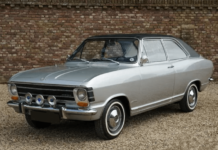[ad_1]
These past few months, I have been hearing a lot about the New Talaria Sting, and how it compared to the popular Sur-Ron Light Bee. So many people were impressed by it that I decided to look into whether or not there were any significant differences, and…I did find some important upgrades that I want to desribe here, so lets get to it.
_______________________________________________
Who is Talaria?
I am always skeptical of any new “me too” company that seems to be copying a popular product, but after some digging, Talaria has been importing the Sting for over a year now. The Talaria name is Latin for “winged sandal” which is a reference to the Roman god Mercury, who could fly swiftly because of the magical wings on his sandals. “Talaria Power Tech Chongqing, LTD” does have an office in Hong Kong, but almost all of their operations are in Chongqing, which is located in the mountainous region of central China.
_______________________________________________
The Primary Drive
There are two major differences between the Sur-Ron and the Talaria, and several small differences. The first big one is that the primary drive on the Talaria is gear-driven, and I’ll explain why I like that.
Electric motorcycles have to make use of every cubic inch of space that is available in the frame in order to maximize the power and range of the battery pack. This means it’s important to keep the size of the motor as compact as possible. One way to get high power from a compact motor is to spin it up to very high RPM’s. However, if you do that, it then becomes more difficult to package the RPM reduction between the motor and the rear wheel. There are practical mechanical limits to how small you can make the drive-pulley, and also how large you can make the final-drive sprocket.
Both the Sur-Ron and the Talaria use a dual-stage reduction. Once you split the RPM-reduction into two stages, the pulleys and sprockets become smaller and they can then be found in more affordable and available sizes. This is especially important for the second stage to the rear wheel, because this is often where customers can easily swap-in a different sprocket in order to tune their ride to suit their particular preferences. A smaller final drive sprocket provides a higher top-speed, and a larger one provides more low-RPM wheel-torque.

Sur-Ron chose a toothed-belt drive for the primary reduction, most likely because a belt will typically run quieter than a chain. That was an adequate choice for the stock Light Bee, but as soon as they began to be imported in large numbers, enthusiasts began upgrading the power of their Sur-Ron, which made the belts wear out faster.
The immediate upgrade is to switch from the stock HTD belt to a Gates-GT4, which is slightly wider and thicker. However, Sur-Ron owners began raising the power of the Light Bee to fairly wild levels, and these electric motorcycles seem to have endless opportunities for upgrades and customization.
For big power, the Sur-Ron primary drive has the option of kits that convert it to a chain drive, using either a #420 chain and sprockets, or #219 Kart chain and sprockets.

In the pic above, you can see the stock HTD pulleys and toothed belt.
A second reason that using two stages is better, is that it easily allows the intermediate “jackshaft” to be located perfectly inline with the axis of the swingarm pivot. This means that as the rear suspension cycles up and down, the tension on the final-drive chain remains constant.

The Talaria chose to make their primary reduction out of helical gears, and they are protected inside a housing while spinning in sealed lubrication. Because the teeth are angled, they run much quieter than the more affordable straight-cut steel gears. It took me a while to find this tear-down pic verifying that the gears were helical. Pic courtesy of this youtube channel

Pic above showing the motor and primary geared drive. Chains can stretch over time, and belts also wear out, but…a sealed lube gear-drive should last the life of the motorcycle, in addition to being stronger.
_______________________________________________
Motor Upgrades
The second big upgrade that the Talaria Sting MX4 “R” has over the Sur-Ron Light Bee is their Interior Permanent Magnet (IPM) motor. The Sur-Ron and also the base-model Talaria Sting MX3 both use affordable “Surface Mount” magnets in their rotor, referred to as Surface Permanent Magnet (SPM). The “R” version is a huge upgrade, and I’ll explain what it is.
When an electric motor is accelerating under load, a popular way to temporarily increase the power is to use a high-performance controller that can provide more AMPS for a few seconds without overheating. Once you are cruising along at a more steady load, the parts can have some time to cool down. Dirt bikes are a little different than street bikes because when crawling on off-road trails, they can spend more time under high load, with less cruise time to cool off.

If you place a thin section of steel between a permanent magnet and a stator, the permanent magnet will magnetize the steel to a certain depth, and this fact can allow engineers to locate the magnet slightly farther away from the eddy currents around the air-gap of the motor.
The steel in the rotor is made from thin laminations that are magnetically and electrically isolated from each other with a thin coating. This makes them very resistant to generating eddy-current waste-heat. Since the magnets are a solid block of material (not made from layers of laminations) they do experience some eddy-current waste-heat when they are close to the air-gap between the stator and the rotor.
The magnets’ sensitivity to eddy-current heat is one of the limitations on how many amps you can use, and also for how long you can apply those amps. The “R” model’s motor can take more amps, and it can take them longer than the Sur-Ron’s motor, or the base model Talaria’s MX3’s motor.

This pic above is from a tear-down video comparing the Sur-Ron’s motor to the Talaria’s Base model motor. The surface mount magnets are clearly visible on both of them.

Here is a pic of the Talaria’s “R” IPM motor’s rotor, with the magnets imbedded inside the stack of laminations. This is how the Bafang BBSHD motor, Zero motorcycles Z-Force 75-7 motor, and Tesla’s Model-3’s motor does it (along with many others).
_______________________________________________
Upgrades
Both “stock” bikes use 60V, but the Talaria has a higher-capacity battery at 45-Ah, compared to the Sur-Ron’s 34-Ah. And, as long as we’re on the subject of batteries, for those customers with a fat wallet, owners have reported that the most dynamic power upgrade was converting to a 72V battery and controller.
If you don’t mind an upgraded battery being taller and sticking up higher, you can get more range or more volts. Here is a 60V / 63-Ah battery available for either one of these motorcycles from Chibatterysystems, called the Titan. This option provides a longer ride, but doesn’t require you to change the controller.
For the highly recommended (but expensive) 72V option, you can get a 72V / 57-Ah pack from EBMX for a staggering $3100 (not including 72V controller).
The Sur-Ron has had over a years head-start on developing third-party parts upgrades, compared to the Talaria, but any company that has been making upgrades for the Sur-Ron, seems to be quickly jumping on board with adding Talaria upgrades to their catalog too.
Seats and seat-risers can adjust the height, along with handlebar risers and pegs to customize the ergonomics of the bike to fit each rider better.
Both Sur-Ron and Talaria have a deep catalog of rear shock and fork options to upgrade and customize the riding response. Brakes remain one of the most popular upgrades, and depending on your budget and how hard you ride, there are dozens of options to suit your needs.
_______________________________________________
Conclusion
The Current price of the Talaria Model “R” at Luna Cycle is $4500, which includes the gear-drive primary, larger battery, and the IPM motor. There is a less expensive base-model Sur-Ron Light bee from several importers, but the upgraded Sur-Ron “X” is $4350, and the Talaria is still more powerful for only $150 more.
The Sur-Ron Light Bee is selling quite well, and it has opened up a huge market in the US as well as around the globe by introducing thousands of riders to how much fun a powerful and light electric dirt bike can be. Its sales numbers are well-deserved and if you can find them in stock, some retailers have advertised the lowest-powered version at $3600 during special sales. The upgraded Sur-Ron “X” and the base-model Talaria MX3 seem to be somewhat similar in price and features, with the exception of the Talaria having a geared primary instead of a belt, and the Talaria’s larger battery.
However, If you want to future-proof your purchase for power upgrades, the IPM motor on the Talaria “R” version makes it worth paying extra for, In my humble opinion. It starts out being more powerful than any model of Sur-Ron Light Bee, and it has a lot of head-room for adding more amps in he future than the Sur-Ron’s stock motor can take…although, to be fair…either one can benefit from the pricey 72V mod.
_______________________________________________
As of April 2023, all of Luna Cycles Talaria Model “R” motorcycles have been sold out, and they are now taking pre-orders for a shipment at the end of May. If you want one, you will have to get one while they are available.
_______________________________________________
LINKS
Click here for Talaria’s Facebook page
Click here for Talaria’s Youtube channel
Click here for the Luna Cycle Talaria page, at $4500
_______________________________________________
Written by Ron/spinningmagnets, April 2023
[ad_2]
Source link















